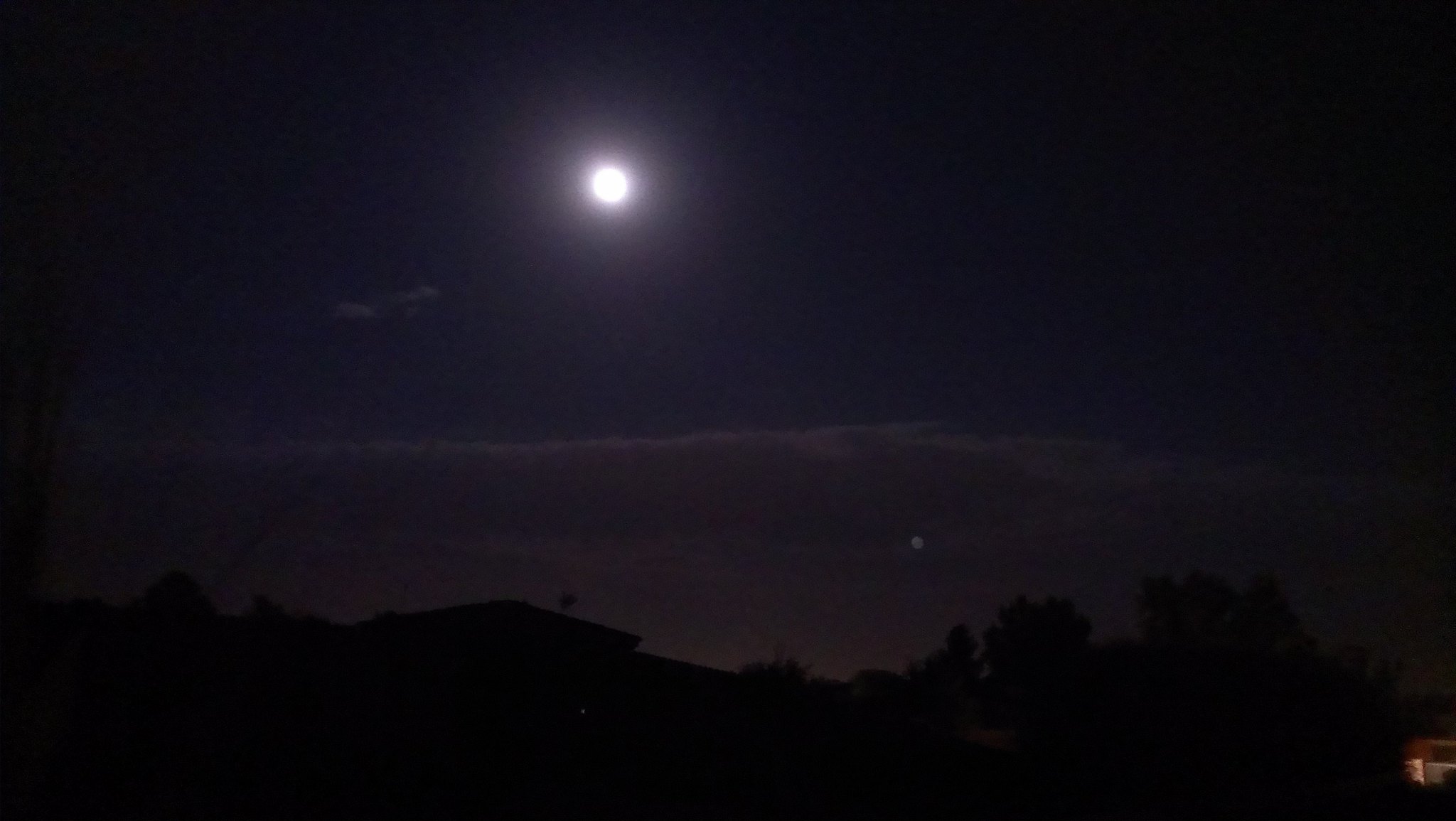So I finally decided to do some extreme low-light testing. And since the camera has no option to manually set the shutter speed, I decided to see how it could do mounted on a tripod and set to the HDR mode, where at least the shutter speed will be much slower for one of the frames.
This first shot is of a neighbor's house, camera on full auto and flash turned off (flash is useless here because the subject is way too far away). Clearly underexposed, as you cannot see anything:
Next shot is of the exact same scene (phone is on tripod, so it's not moving), except this time, I set the camera to HDR mode. Came out better, but still way underexposed:
As is typical with nighttime photography, the on-screen display is useless because it's just showing black, but from the previous picture, I could see that I was pointing the camera way too low. Most of the pic is of the lawn. So I angled the view up until the sodium lamp came into view. Somehow with this information, the HDR software did a much better job with the exposures, but the result was super grainy:
Finally, I decided to do some motion blur and waited for a car to drive by. Same settings as before: no flash, HDR, everything else default. The car's headlights provided decent light to surrounding objects, so this photo came out better than the rest:
If I had manual control of the shutter speed, I could have dragged the car lights out for a longer distance. Note that all of the above photos are also very desaturated.
Tripods are a must for low-light shooting, and even then, image quality is not good. But I never had expectation that this camera would be able to handle such extreme conditions.
It's still a great camera for more common use cases.
BTW, here's a picture of the setup. I have a binocular mount connected to a quick-release plate that's loaded onto the head of my tripod. The phone is wedged in place with a folded up napkin. Ghetto, yes, but it did the job holding the camera still.
Maybe I should have forced a lower ISO. That may improve the grainyness and desaturation problem. I suspect though that the shutter speed would not get correspondingly slower though, which means even darker images.
Perhaps my standards are too high. I dunno. Here's a shot of Vegas I took back in 2003 with an entry-level dSLR. 30-second exposure and small aperture to get everything in focus:



















